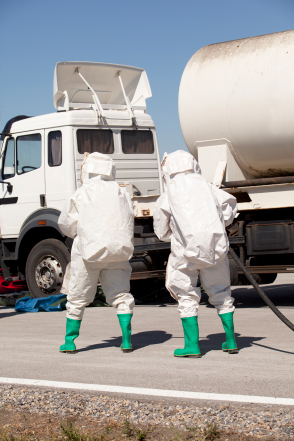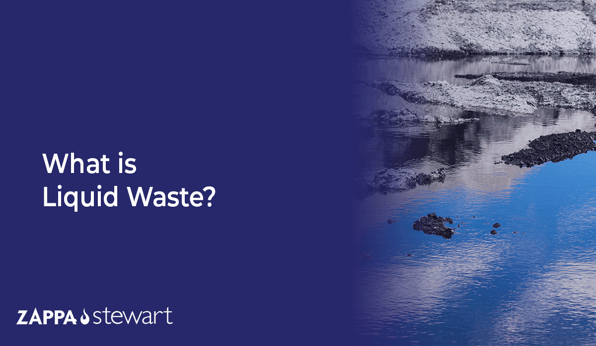Safe and Lasting Liquid Waste Disposal: Your Go-To Company
Safe and Lasting Liquid Waste Disposal: Your Go-To Company
Blog Article
Just How Fluid Waste Disposal Works: A Thorough Introduction of Methods and Technologies Employed

Review of Liquid Waste Types
The complexity of liquid waste types necessitates a comprehensive understanding of their qualities and ramifications for disposal. Liquid waste can broadly be classified right into a number of types, including industrial, municipal, farming, and contaminated materials. Each group displays unique residential properties, needing particular management strategies to minimize ecological and health and wellness dangers.
Industrial liquid waste stems from making processes and frequently contains an array of pollutants, such as heavy steels, solvents, and organic compounds. Metropolitan fluid waste, mainly comprising wastewater from households and business establishments, consists of raw material, nutrients, and microorganisms (industrial wastewater treatment). Agricultural liquid waste, consisting of runoff from ranches, may contain plant foods, pesticides, and pet waste, posing threats to water high quality and ecosystems
Harmful fluid waste is characterized by its toxicity, sensitivity, or possible to create harm. Comprehending these varied fluid waste types is important for creating reliable disposal approaches and guaranteeing compliance with ecological laws.
Physical Therapy Methods

Screening is the preliminary step, where larger particles and particles are gotten rid of from the fluid waste utilizing screens or grates. This process protects downstream tools from damages and makes sure smoother operation. Following screening, sedimentation makes use of gravitational pressure to separate solids from fluids. In sedimentation containers, much heavier bits settle at the base, creating a sludge layer, while the cleared up liquid can be more dealt with.
Filtering is another crucial technique that involves passing the fluid with permeable materials, such as sand or membrane layers, to catch smaller sized fragments. This step boosts the high quality of the fluid, making it suitable for succeeding treatment procedures.

Chemical Treatment Methods
Chemical therapy strategies are crucial for effectively handling liquid waste, particularly in attending to liquified and colloidal impurities that physical methods may not adequately remove. These strategies utilize various chemical agents to reduce the effects of, precipitate, or transform harmful materials into less unsafe forms.
One typical method is coagulation and flocculation, where chemicals such as alum or ferric chloride are included in advertise the gathering of suspended bits. This procedure boosts sedimentation, enabling for much easier elimination of the resulting sludge. Additionally, oxidation processes, utilizing representatives like chlorine or ozone, are employed to break down intricate natural substances and pathogens, making the waste much safer for discharge or more therapy.
Neutralization is another critical method, which changes the pH of acidic or alkaline waste streams to neutral degrees, protecting against potential harm to downstream systems and the environment. Additionally, progressed oxidation article source procedures (AOPs) use mixes of oxidants and ultraviolet light to weaken relentless toxins, achieving a higher degree of therapy performance.
Organic Therapy Procedures
Organic therapy procedures play a critical duty in the monitoring of fluid waste by making use of microbes to decompose organic issue and lower impurity degrees. These procedures can be extensively categorized into aerobic and anaerobic treatments, each employing specific microbial communities to achieve efficient waste deterioration.
Cardio therapy includes using oxygen to help with the malfunction of organic materials by microorganisms. This procedure is frequently executed in triggered sludge systems, where aeration storage tanks provide a conducive setting for microbial development, resulting in the oxidation of organic toxins. The resultant biomass can be divided from dealt with effluent through sedimentation.
On the other hand, anaerobic therapy happens in the lack of oxygen, relying upon different microorganisms to break down raw material. This technique is particularly helpful for high-strength waste, as it produces biogas, a renewable resource source, while lowering sludge production. Technologies such as anaerobic digesters are regularly utilized in municipal and commercial applications.
Both cardiovascular and anaerobic organic treatments not just reduce the ecological effect of fluid waste but additionally help with source recovery, making them crucial elements of lasting waste administration approaches. Their versatility, performance, and efficiency support their prevalent execution across different fields.
Emerging Technologies in Disposal
Ingenious strategies to liquid waste disposal are quickly evolving, driven by developments in modern my blog technology and an increasing emphasis on sustainability. Among these emerging modern technologies, membrane layer bioreactors (MBRs) have gained traction for their capability to integrate organic therapy with membrane layer filtration, resulting in premium effluent that can be recycled in numerous applications. MBRs make it possible for smaller sized footprints and more efficient operations compared to conventional systems.
One more appealing advancement is making use of anaerobic food digestion integrated with nutrient recuperation modern technologies, which not only treats fluid waste yet additionally creates biogas and recoups important nutrients like nitrogen and phosphorus. This dual advantage improves resource effectiveness and decreases environmental influence.
In addition, progressed oxidation procedures (AOPs) are being embraced for the degradation of complex natural toxins. These techniques use powerful oxidants and stimulants to damage down pollutants at the molecular level, offering a very reliable service for challenging waste streams.
Moreover, the assimilation of expert system and artificial intelligence in waste monitoring systems is enhancing operational performance and predictive upkeep, causing minimized costs and boosted environmental conformity. These modern technologies show a substantial change towards even more effective and lasting liquid garbage disposal methods.
Conclusion
To conclude, effective fluid waste disposal demands an extensive understanding of numerous methods and modern technologies. The combination of physical, chemical, and organic treatment techniques ensures the effective management of diverse waste kinds. Additionally, the appearance of ingenious modern technologies enhances therapy efficiency and promotes sustainability in waste monitoring practices. By constantly progressing these methodologies, it ends up being feasible to address the growing obstacles connected with liquid waste, inevitably adding to environmental management and resource recovery.
Fluid waste disposal is a vital element of ecological monitoring, calling for a thorough understanding of various techniques and technologies tailored to different waste types. Liquid waste can broadly be categorized right into several types, consisting of commercial, municipal, farming, and hazardous waste. Agricultural fluid waste, more helpful hints including drainage from ranches, might have plant foods, chemicals, and pet waste, posturing threats to water top quality and ecological communities.
Numerous physical therapy approaches play an essential duty in handling fluid waste successfully - industrial wastewater treatment.In final thought, efficient fluid waste disposal demands a thorough understanding of numerous strategies and technologies
Report this page